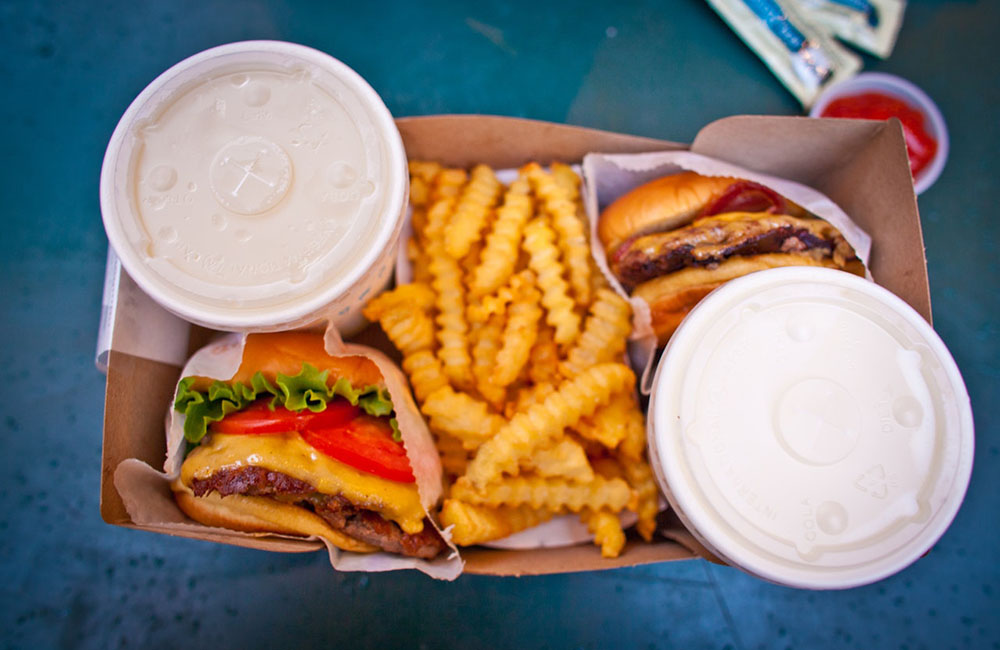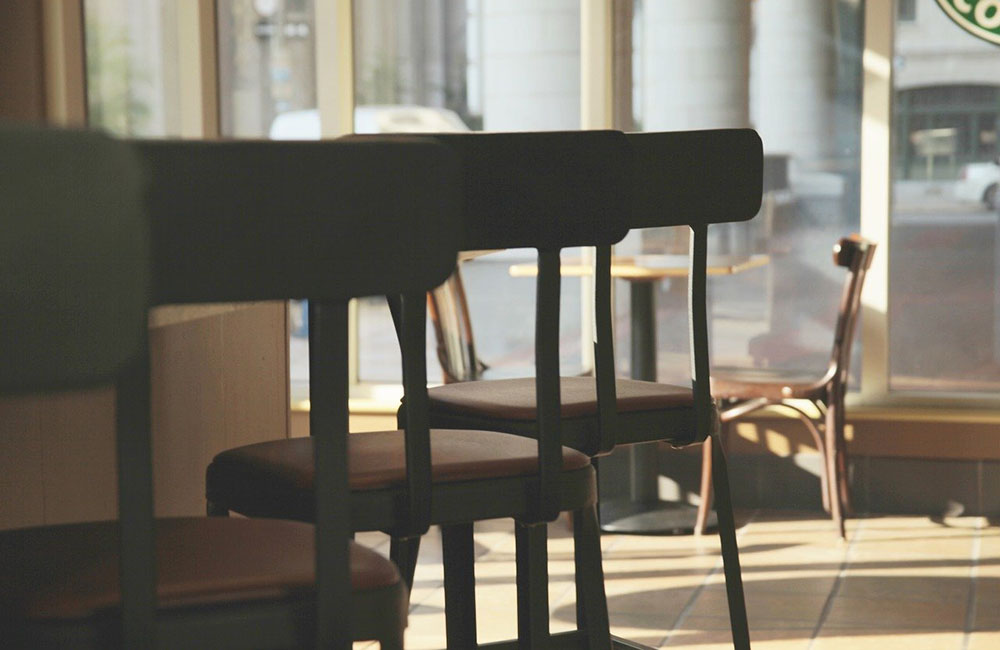The effects of coronavirus on dining out came in like a respiratory wrecking ball to a normally thriving industry. Currently, with no cure in sight, nearly all Americans are on a virtual lock-down. To date, nearly 5 million workers have been laid off due to the coronavirus and half of that number worked in the food-service industry. That means that roughly 2.5 million food workers are out of a job and many other Americans are left wondering if and how they'll get their food fix.
The average American family eats out four to five times a week so it's no wonder that the food-service industry, a pillar in the nation's economy, has been hit so hard, especially now that new restrictions are in place for social distancing and limits for public gatherings. In this article, we'll explore some ways restaurateurs can adapt to the changing landscape of restaurants in this time of uncertainty.

Can the Coronavirus Survive on Food?
There is no hard data on how long the virus could last on food. Remember, this is a virus that's transmitted by air droplets when an infected person coughs or sneezes. However, coronavirus can remain on some surfaces up to 24 hours on paper and up to 3 days on stainless steel or plastic. Some studies suggest that heating food at 145 degrees Fahrenheit can reduce foodborne contagion for most strains of coronavirus, but this is common knowledge for almost all foodborne pathogens.
Is Take-Out Safe to Eat?
It's unlikely one could contract the coronavirus from take out or delivered food because restaurants adhere to far more stringent health codes than the average home kitchen. However, check the local health department online and locate a restaurant's вЂfood safety score' for reassurance. Chances are if their scores were good then, they'll be just as good now, if not better.

How Are Restaurants Adapting?
Large restaurant chains with drive-up windows will fare well, but might be hindered by supply chain logistics. The greatest impact will be on independent restaurants that typically have high overhead and low margins. Here are some ideas to encourage owner operators to think outside of the brick and mortar box.
Utilize Staff in New Ways
Operators can keep their servers, bussers, and waitstaff on the payroll while decreasing risk to the customer with a little ingenuity. Start by creating a log for coronavirus safety measures and refer to it several times per shift.
- Review personal hygiene rules and the importance of maintaining a sanitary workspace with each employee. Find a solid supplier of gloves, disinfectants, sanitizers, paper products and stock up.
- Deep clean the kitchen by wiping down food prep surfaces and thoroughly mop the floors. Regularly test sanitation buckets for the proper ratio of sanitizer to water based on state and federal guidelines.
- Use a spray bottle of sanitizer or disinfectant to deep clean appliances like beverage dispensers, bolted down can openers, blenders, mixers, and slicers. Pay careful attention to touch pads and buttons, knobs, lids, and handles that the staff touches during every shift. Make sure to wear rubber or latex gloves and switch them out as needed.
- Wipe down exterior reach-ins, walk-ins, refrigerators, freezers, and pantries. For the inside, check labels, rotate product (FIFO) and wipe down shelves.
- Wipe down interior and exterior door handles, including the restroom and the entrance/exits.
- Stock handwashing stations and restrooms with soap, paper towels and wipe out basins regularly. Check soap and sanitizer levels on commercial dishwashers.
- Frequently spray down cash registers, telephones, computer screens and keyboards with sanitizer and wipe down pens and pencils that the staff shares. Practice sanitary cash and card handling measures by, for example, installing sneeze guards.
- Provide clean aprons and hand-towels and if they are washed in-house, wash them in hot water and sanitize with chlorine bleach.
- Wait staff can also be helpful for answering phones, managing online orders, packing food, and making deliveries. Make sure they have access to gloves and face masks, if needed and their vehicles are insured according to state guidelines if they deliver in their personal vehicles.

The New Dawn of Delivery
For restaurants that rely solely on food delivery apps like Uber Eats, Door Dash, Grub Hub, etc. provide disinfecting wipes or a bottle of hand-sanitizer for drivers to squirt on their hands as they pick up. Examine their appearance. Do they look clean and presentable? Are they taking precautionary measures inside their vehicles to avoid cross-contamination? Many drivers drive the general public around when they aren't delivering food. This is the time to have a friendly conversation with the driver about what is working and what can be improved upon.
Door to Doorstep Drop Off
Some customers may want their food passed through a door or window of their workplace or residence, while others prefer it to be dropped off on steps or a curb from a safer distance. This is the time to be specific about drop off details and never leave food unattended. Delivery drivers should remain in their vehicle and wait until the customer retrieves their food.
Curbside Pick Up
Most restaurants can or will continue to offer takeout as they adjust to new guidelines for social distancing and group gathering. Restaurants can offer curbside pick-up as local regulations allow. Make sure food is properly secured within its packaging and placed in covered boxes or bags that can be stapled shut. Do not take the food out to the customer until they've arrived.
Food Carts/Food Pods and Mobile Food Carts
Many food trucks are located in вЂpods' where several are permanently parked in one location. Food carts run less of a risk trying to stay in business because customers simply walk up, order, and take-away. The same strict sanitation rules should apply and customers should be encouraged to stand 6 feet or more from the next person in line.
Sarah Abraham is the owner of Bluma's Chicken and Waffles food truck in Bend, Oregon. Sarah partnered up with other local restaurateurs and created a вЂRestaurant Bingo' game-card that features local eateries so customers can continue to support local businesses during this time.

Create or Reinstate Loyalty Programs
Now is the time to dust off that BOGO promo or punch-card or gift card program. Encourage customers to purchase a gift card for a friend or neighbor or for the future when dine-in restrictions are lifted. Offer discounts for drinks, dessert, or delivery.
Chef James Bradley at Po'Shines CafГ© de la Soul in Portland, Oregon offers seniors 65+ a free dinner entrГ©e every Tuesday and Thursday and partners with Grub Hub and Door Dash for free delivery. By donating meals and engaging other businesses in the spirit of community service, Po'Shines will no doubt see its bottom line fatten up when this threat is over.
Consider donating meals to the homeless or provide sack lunches to kids under ten or alternate specials on certain days. Build a DIY kit where families can assemble ingredients at home and make their own pizzas, burgers, or desserts. Offer a cookie decorating kit for kids who are quarantined on their birthday. Create meal kits for multiple days of the week instead of a one-time delivery. This is a rare opportunity to help families make memories in a time of uncertainty and earn future business dollars by generating customer loyalty!
Stay Connected
In closing, it's important to remember that this threat is affecting everyone and every business across the globe. Check local city and state websites for the information that pertains to your establishment often. Don't hesitate to reach out to other businesses in the area for support. By reaching out to communities, collaborating on solutions and remaining calm, but focused, the fallout can be minimized and recovery will be easier.
Shannon Llewellyn for McDonald Paper & Restaurant Supplies


